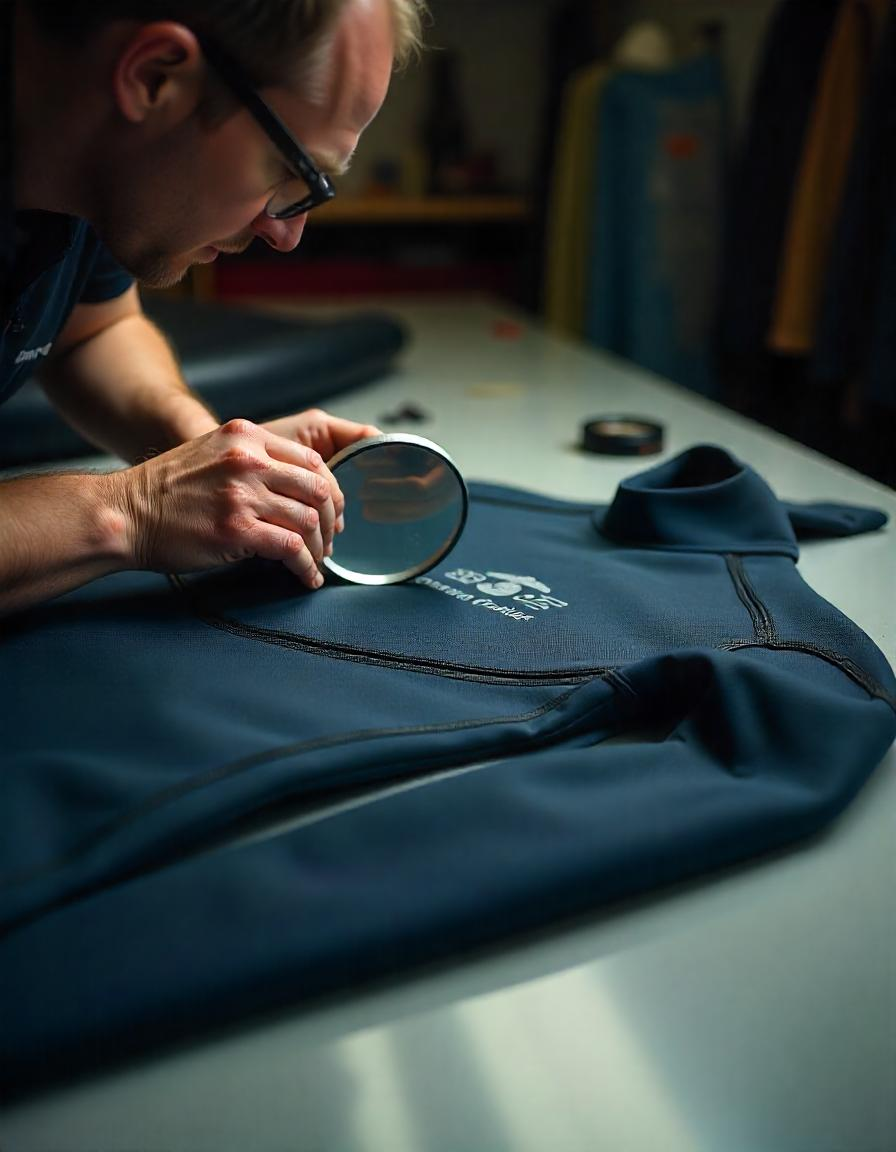A wetsuit is an essential piece of gear for any water sport enthusiast. Over time, exposure to harsh conditions or accidental tears can cause damage. Fortunately, many wetsuit repairs can be done at home, saving you time and money. In this guide, we’ll walk you through common wetsuit repairs, DIY fixes, and when it’s best to seek professional help.
1. Common Wetsuit Damages
Understanding the typical wear and tear your wetsuit might experience is the first step in determining how to repair it. Here are some of the most common issues:
- Small Tears or Holes: Neoprene can easily get punctured by sharp objects like rocks or coral, leading to small tears.
- Damaged Seams: Seams can come apart, especially in areas of high stress, like the armpits or knees.
- Zipper Issues: Wetsuit zippers can break, get stuck, or lose their teeth over time.
- Worn-out Neoprene: With regular use, the neoprene may lose its stretch, becoming stiff and less insulating.
- Chafing and Rubbing: Continuous friction can lead to uncomfortable areas where the wetsuit rubs against the skin.
2. DIY Wetsuit Repair: Fixing Small Tears and Holes
Small tears or holes are common in wetsuits and can usually be repaired easily with the right tools. Here’s how to fix them:
- Step 1: Clean the Damaged Area
Before starting the repair, clean the area around the damage with fresh water and mild soap. Let it dry completely. - Step 2: Apply Neoprene Glue
Neoprene glue or wetsuit adhesive is designed for wetsuit repairs. Apply a thin layer of glue around the tear or hole. Make sure the glue covers the entire damaged area. - Step 3: Press and Hold
After applying the glue, press the edges of the tear together and hold for a few minutes. If necessary, use tape or clamps to keep the repair in place while it dries. - Step 4: Let it Cure
Allow the glue to fully cure as per the manufacturer’s instructions. This typically takes several hours. Do not rush the process, as improper curing can weaken the repair. - Step 5: Test the Repair
Once the glue is dry, gently stretch the repaired area to ensure it’s sealed and strong. If it holds up, the repair is successful.
Tip: For larger holes or cracks, apply an additional layer of glue and press with a small piece of neoprene fabric to reinforce the patch.
3. Repairing Worn-out Seams
Seams can begin to come apart due to excessive stretching or abrasion. Here’s how to fix seams that have started to separate:
- Step 1: Inspect the Seam
Check the seam for any loose stitching or gaps. You may need to trim off any frayed threads with a pair of scissors before starting the repair. - Step 2: Apply Wetsuit Adhesive
Use neoprene glue to bond the separated parts of the seam. Apply a thin layer of glue to both sides of the seam. - Step 3: Press Together
Press the seam together and hold it in place for a few minutes. You can use clamps or tape to ensure the adhesive holds. - Step 4: Reinforce with Stitching
If the damage is significant, it may help to stitch the seam once the adhesive has dried. Use a strong, waterproof thread and a needle designed for neoprene. Sew the seam carefully to avoid adding extra holes. - Step 5: Let It Dry
Allow the glued and stitched seam to cure fully before using the wetsuit.
Tip: Reinforcing seams with tape specifically designed for wetsuits is another option if glue alone isn’t sufficient.
4. Fixing Zipper Issues
Zipper problems can range from sticking to broken teeth. Here’s how to address some of the common zipper issues:
- Stuck Zipper
If the zipper is stuck, try rubbing a little wax, silicone spray, or petroleum jelly on the zipper teeth to lubricate it. Gently work the zipper back and forth until it moves freely. - Broken Zipper Teeth
For missing or broken zipper teeth, replacing the zipper is the best option. While some experienced DIYers may attempt to replace the zipper themselves, it’s often easier to take the wetsuit to a professional to avoid further damage. - Zipper Pull Problems
If the zipper pull is broken or missing, you can replace it with a keyring or another small, sturdy item temporarily. A more permanent solution would be to take the wetsuit to a repair service for a full zipper replacement.
5. Dealing with Worn Neoprene
Over time, the neoprene material in your wetsuit may become less stretchy or lose its insulating ability. While you can’t fully restore worn-out neoprene, here are some tips to extend its life:
- Use Neoprene Conditioner
A neoprene conditioner helps restore some of the material’s flexibility. Apply it after cleaning your wetsuit to keep it feeling softer and more pliable. - Store Your Wetsuit Properly
Avoid storing your wetsuit in direct sunlight or extreme heat, as this can degrade the neoprene. Instead, hang it in a cool, dry place, out of direct sunlight.
6. When to Seek Professional Help
While DIY wetsuit repairs are great for small issues, there are times when professional help is needed:
- Large Tears or Punctures
If the damage is extensive (e.g., large tears in critical areas like the chest or back), it’s best to seek a professional repair to ensure the integrity of the suit. - Zipper Replacement
Replacing a broken zipper requires specialized tools and experience. It’s better to take your wetsuit to a repair specialist to avoid causing more damage. - Major Seam Failures
If the seams have come apart in multiple areas or the wetsuit is showing signs of significant wear, a professional repair shop can offer a more durable fix. - Neoprene Degradation
If your wetsuit’s neoprene has lost its stretch and warmth, it might be time for a full replacement, though some professionals offer repair services to recoat or reinforce neoprene in certain cases.
Conclusion
Repairing a damaged wetsuit can be simple and cost-effective if you know how to address the issue. Small tears, damaged seams, and zipper issues can often be fixed at home with a wetsuit repair kit and some patience. However, for more serious damage, like large tears or zipper replacements, professional repairs are recommended to ensure the wetsuit remains functional. Regular care, proper storage, and timely repairs will help extend the lifespan of your wetsuit, keeping it ready for your next adventure in the water.





